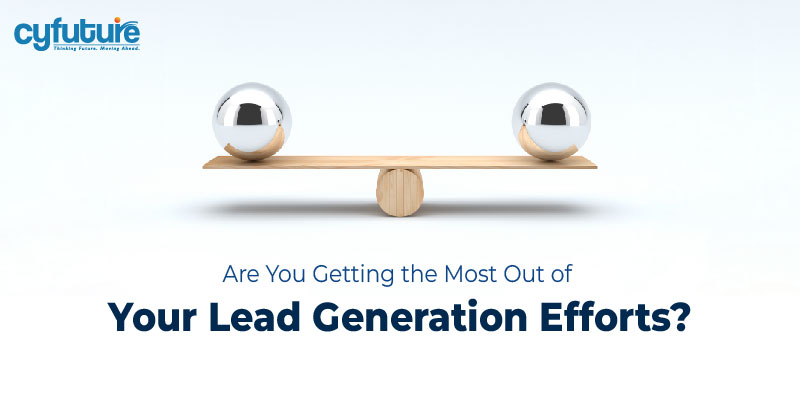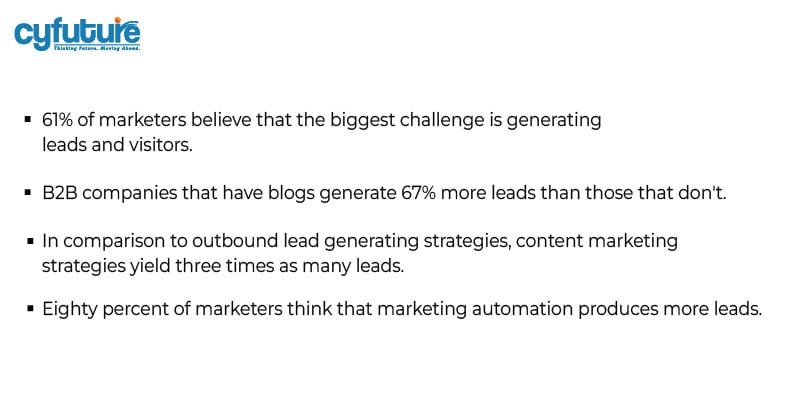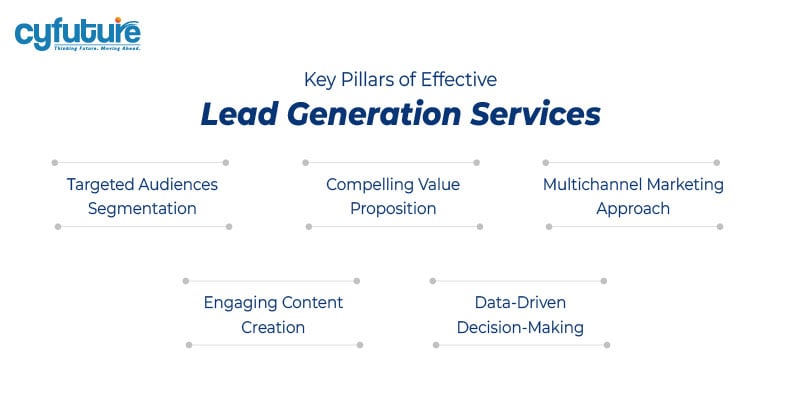-
Get Cloud GPU Server - Register Now!
Toggle navigation

Acquiring and nurturing premium leads is the lifeline of future sustainable growth and profitability in the hyper-competitive world of today’s business. With saturation levels of markets and a reduction in consumer concentration, lead generation has never been more important to optimize business activities for greater success.
However, the lead generation landscape has changed with the inevitable march of digital transformation in recent years. It is no longer a world where traditional outbound marketing techniques feed your sales funnels. Therefore, the smart consumer today seeks something that enables a harmonious integration across multitouch as well as multiple platforms on a value-driven approach.
Whether you are an experienced marketing professional who wants to refine your tactics or a business owner who is seeking to unlock new growth drivers, this complete resource will give you the knowledge and insights to harvest maximum value from your lead generation initiatives.
Additionally, we look at every angle of modern lead generation strategies, from the revolutionary impact of AI and ML algorithms to the enduring importance of human insight and relationship-building. So, prepare to challenge assumptions and welcome innovation as you transform your approach to lead generation in ways that create tangible, measurable business outcomes.
However, let’s take a look into a few stats and data before delving deep.

Now, let’s delve into the deep knowledge pool!
The art of lead generation has undergone a dramatic shift over the past few years. No longer are leads coming through from traditional sources, such as print advertisements or cold calling. Modern lead generation services encompass an enormous spectrum of digital and highly personalized approaches. Radical advances in technology; the evolving behavior of the consumer; and complexity in marketing analytics have all contributed to this change.
This digital period has introduced multiple channels and methodologies for lead generation. From content marketing and social media engagement to SEO and PPC advertising, the options have multiplied exponentially for attracting a suitable number of potential customers. This multitude of options, though offering unheard-of opportunities, has become increasingly difficult to formulate a strategy for and allocate resources correctly.
AI and ML are all game-changers in lead generation. These technologies allow businesses to process large datasets, predict consumer behavior, and personalize marketing efforts at scale. Armed with such AI-driven insights, companies will be able to dramatically identify the highest leads, thereby optimizing conversion rates and ROI.

To check if the leads have reached their optimal state, it is about knowing which basis shows whether your lead generation is effective, covering three main pillars.
Good lead generation comes from the bedrock of precise audience segmentation. Understanding and identifying your target audience makes it easy to target the marketing in line with the distinct needs and preferences of the target audience.
With sophisticated data analytics tools and techniques, you can segment your audience in demographics, behavioral segments, and psychographic segments so that your message hits the right people at the right time.
A strong value proposition is what makes your offering stand out from the rest of the competition and truly attracts potential customers. It’s supposed to communicate the exacting, unique benefits and value that your product or service will be providing soon.
Building a solid value proposition requires research to understand very well what is exactly annoying your target audience and how your proposed solution will help them out.
Using only one channel for marketing automatically restricts reach and impact. A good lead generation campaign is multichannel; it uses the engagement of content marketing, email campaigns, social media, SEO, and paid advertisement. This is going to get you in touch with leads through multiple channels, thus uplifting the prospects of conversion.
Content is the key to lead generation service. Quality, relevant, and engaging content attracts and nurtures leads at each stage of their buyer’s journey-from blog posts and white papers to videos and webinars.
You want the value of your content to answer the questions they are looking for and to build trust with those interested in your offerings. On top of that, personalized content and interactive media can facilitate greater engagement and conversion as well.
Use data analytics to drive lead generation activities at peak performance. Metrics to monitor include conversion rates, quality of leads, and the cost of acquiring a customer; these might give an idea of what to improve upon and where adjustments to strategies might be required.
Also, CRM systems coupled with marketing automation tools will prove helpful in providing insights and reducing the effort in generating leads.
Having laid down the foundations, let’s move on to some advanced strategies that may well help carry your lead generation efforts to greater heights.
The efficiency and effectiveness of lead generation can be scaled up by adding AI and ML capabilities. AI-powered tools can analyze huge amounts of data to identify patterns and predict the behavior of leads, and you can use this to personalize marketing efforts and improve the scores for leads. Chatbots and virtual assistants can engage in real-time interaction with leads, offering instant responses, and creating relationships.
ABM is an ultra-focus approach, where focus is paid to major accounts rather than to all and sundry. The condition to be met is that you can create custom, client-specific experiences that resonate with the decision-making levels if you tailor your marketing efforts to specific accounts. ABM involves close collaboration between marketing and sales teams in determining the target accounts and building customized content that could be executed in a coordinated campaign.
Interactive content such as quizzes, assessments, and calculators will surely pop out the excitement from your audience’s eyes and make them participate in an interactive session. Elements of gamification, for instance, leaderboards, badges, and rewards can add a huge amount of engagement and motivate leads to take action. Moreover, these interactive experiences not only give value but also capture valuable data that could support further lead nurturing efforts.
Partner with influencers: This can boost the number of views and credibility. Influencers have built trust and authority in the niche and have, therefore, the potential to have a significant impact on lead generation through endorsing a program. Identifying the right influencers to craft authentic collaborations will give you access to new audiences and high-quality leads.
Webinars or virtual events can be a useful platform for showcasing your expertise, engaging prospects in conversation, and generating leads. It can attract an extremely engaged audience with valuable insights and interactive experiences. Follow-up strategies, like personalized emails and post-event content, can nurture leads and drive conversions.

An optimized lead generation funnel is the lifeblood conduit that lets you convert leads into a customer. The crucial steps and strategies to further enhance each phase of your funnel are as follows:
The tip-end part of the funnel is attracting and garnering interest among potential leads. Key strategies include:
Content Marketing: Blog posts, infographics, and social media content target points of pain in your audience and also deliver value.
SEO: Optimize your website and content for search engines to increase visibility and attract organic traffic.
Paid Advertising: Pay-per-click (PPC) campaign and social media ads to reach a bigger audience.
The leads are nurtured, and the relationship built is the middle of the funnel. The strategies may include:
Email Marketing: Send them personalized and segmented email campaigns to give them helpful insights and offers.
Webinars and Ebooks: You can offer rich, educational content to your audience using webinars and ebooks.
Retargeting: Deliver retargeting ads to leads who have demonstrated interest in your offerings.
This stage is meant to convert your leads into customers. Some strategies adopted include:
Case Studies and Testimonials: Social proof and stories of success that explain the value proposition to your customer.
Free Trials and Demos: Allow the leads to try your solution in live practice.
Tailor-made Offers: Tailor-made offers with discounts and incentives for conversion.
Lead generation service can never be a one-time effort: it is an ongoing process of refinement and optimization. The beauty of continuously testing and iterating your strategies can mean significant improvements. Engage A/B testing to compare different approaches, identify what resonates best with your audience, and regularly analyze your metrics and feedback to uncover insights that will yield adequate adjustments in your tactics.
Lead generation service providers can be a game-changer for those businesses that are looking forward to upgrading their lead generation process. They bring experts, advanced tools, and strategies right to your doorsteps, helping you achieve results much faster than you would normally acquire. How to Choose the Best Provider: Make sure you consider the following in selecting a lead generation services provider, such as:
Always go for providers who have a clear history of success and do receive positive testimonies from clients.
Let the provider adjust the services according to your specific objectives and requirements.
Choose a provider that uses the most emerging technologies like AI, machine learning, and marketing automation.
Choose a provider who is transparent and gives reports and outcomes to them.
In conclusion, lead generation in today’s digital landscape is a combination of current technology innovations and strategic thinking. Lead generation has shifted from its traditional form to a wide array of digital and personalized approaches. With the use of AI and machine learning, it has extended the effectiveness of lead generation services that rest upon pillars such as segmentation of target audience, value proposition, marketing through multiple channels, creation of content, and data-driven decisions.
In the more advanced approaches – for instance, account-based marketing, interactive content, influencer partnerships, and virtual events, there is much room to elevate the output of lead generation. Moreover, you also need to tweak your funnel to optimum at each of the awareness, consideration, and decision stages with continuous improvement through testing and iteration.
Partnering with specialized lead generation service providers can give businesses seeking to upgrade their capabilities for successful lead generation professional excellence, advanced tools, and strategies to speed up the results. Consider reputation, flexibility, level of technological competencies, and transparency in reporting by a provider.
Ultimately, successful lead generation is an ongoing process of refinement and adaptation, committing to analyses of data, customer understanding, and strategic innovation toward sustainable business growth in an increasingly competitive marketplace.
It depends on the resources, expertise, and goals you dispose of. Outbound lead generation companies bring specific expertise, high-end tools, and scalability. But holding at least some capabilities in-house allows for maintaining control as well as institutional knowledge. A hybrid is usually a good solution for most businesses.
Concentrate on building relevant audience segmentation, valuable and relevant content, lead scoring systems, and multitouch attribution models, and continually refine your ideal customer profile. Alignment towards a specific solution of pain points tends to often improve the quality of leads.
A lead generation funnel graphically describes the process from awareness to conversion. Most times, it includes awareness, interest, consideration, and finally, decision. It helps provide targeted strategies for each stage, which will allow a flow of leads toward conversion.
You compare the revenue returned in terms of converted leads against total costs for the generation of those leads to find out the ROI. You aggregate all costs about associated activities: advertising spend, tool subscriptions, and personnel time. When giving revenue to your lead generation activities, always apply attribution modeling to assign it correctly.
Staying current on topics like GDPR, CCPA, and all other applicable legislation becomes integral to your conscious state. Ensure the transparent collection of data is being practiced with the exploitation of explicit consent of data usage; easy opt-out options must be present, and your data handling and storage practices compliant. Auditing frequently and becoming liable for the consultation of the right legal experts completes the job.